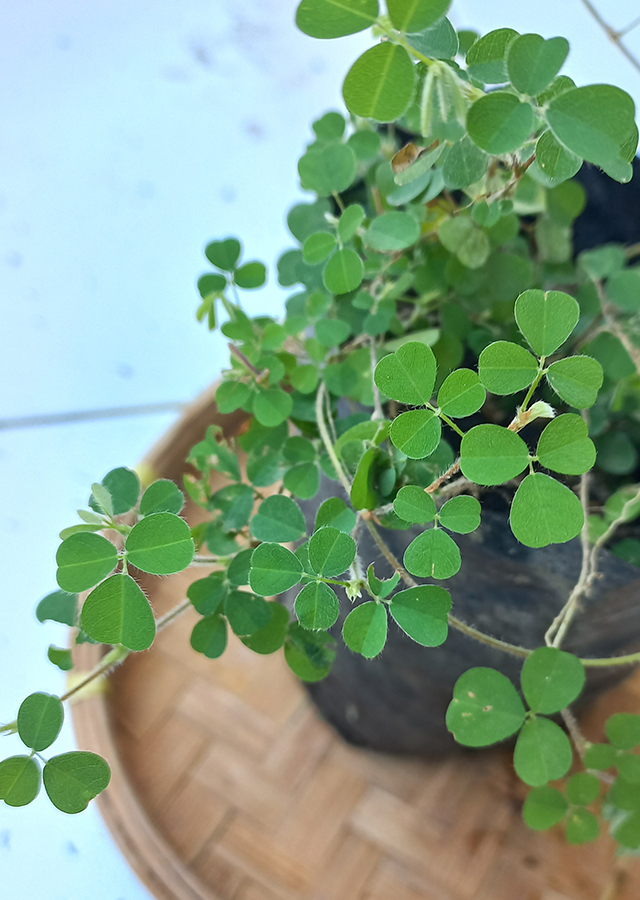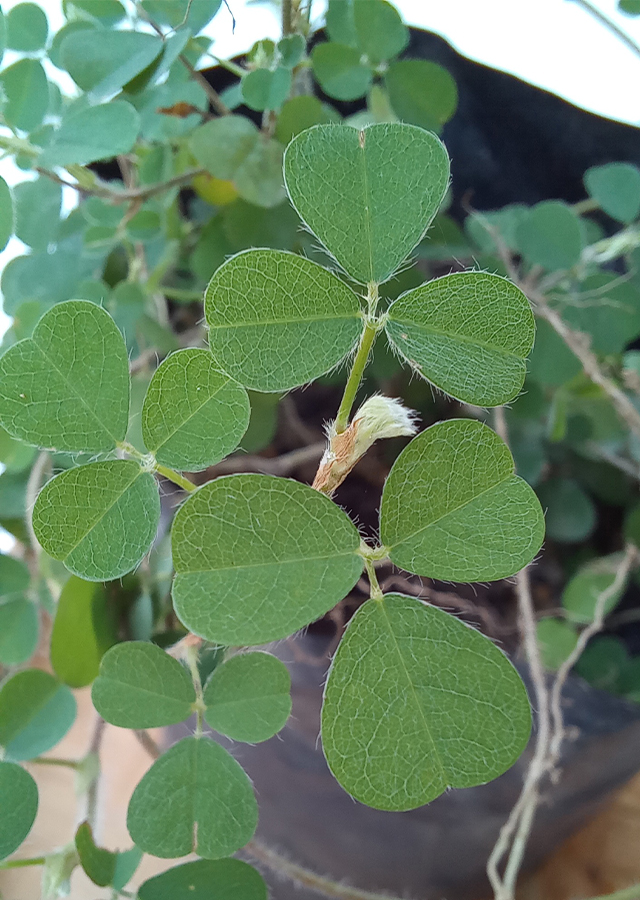Traditional Herbs from Desmodium heterophyllum
wound
- Take the roots and leaves of betok scales, wash them until clean.
- Crush them until they become a paste.
- Apply on the wound.
treat_earache
- Take the leaves of betok scales, wash them until clean." ,"Crush it until it becomes a paste.
- Squeeze out the water.
- Drop it in the ear to treat earache.
What is Desmodium heterophyllum Looks like??



Parts of Desmodium heterophyllum that could be used
- Leaves", "Roots", "Twigs", "All Parts of the Plant
Desmodium heterophyllum Distribution
Betok scales originate from tropical Asia and nearby islands, naturally found in Mauritius, India, Nepal, Sri Lanka, Burma, Thailand, Indo-China, Malesia, China and Taiwan. This plant is widely used in various countries as an ingredient in traditional medicine. Especially in Indonesia, where the people of West Java have used betok scales as a post-natal medicine, while the people of Lombok have used the roots, stems and leaves to treat scabies and itching. Apart from that, betok scales have the ability to grow quickly so they are often used as a ground cover plant in an effort to reclaim land former mining activities.Agroecology of Desmodium heterophyllum
Betok scales are plants in the humid tropics that can be found in areas at an altitude of up to 900 m above sea level, generally growing on riverbanks, roadsides, field edges, and grasslands. Its growth requires a position in full sun (6-8 hours per day) but is tolerant of shade, with annual daytime temperatures in the range of 23-28 °C, but can tolerate 12-35 °C, average annual rainfall. The average is in the range of 2,000-4,000 mm and is able to survive the dry season for up to 5 months. Betok scales are suitable for planting in various types of soil ranging from sand to clay with soil acidity (pH) in the range of 5-6, but tolerate 4.5-7 and are resistant to drought.
Morphology of Desmodium heterophyllum
"The roots have nodules to fix nitrogen." trifoliate), the leaf blade is oval to oval, the leaf edge is flat with a slight notch at the tip (emarginate). The upper surface is hairless while the lower surface has sparse and long hairs.
Cultivation of Desmodium heterophyllum
Propagation can be done vegetatively (cuttings) and generatively (seeds).
Desmodium heterophyllum, more details :
Chemical Content of Desmodium heterophyllum(3R)-2',4',5,7-tetrahydroxy-6-methylisolavanone, 4',5,7-trihydroxy-3'-methoxyisoflavone, 2',4',5,7-tetrahydroxyisoflavone, alkaloids, isoflavanone, dalbergioidin, genistein.
Benefits of Desmodium heterophyllum
Treats dysentery, diarrhea, rheumatism, relieves fever, treats earaches, stomach aches and other stomach complaints, post-natal medication, treats skin problems (scabies and itching), treats wounds, boils, coughs, asthma, diuretics and galactagogues (increases breast milk production).
Simplisia of Desmodium heterophyllum
Another Facts for Desmodium heterophyllum :
Synonym of Desmodium heterophyllumDesmodium triflorum var. majus Wight & Arn., Hedysarum heterophyllum Willd., Hedysarum reptans Roxb.
Habitus of Desmodium heterophyllum
Bush. Low shrub, growing creeping and spreading, reaching a length of up to 1.5 m
Habitat of Desmodium heterophyllum
- Riverside", "Roadside", "Grassland", "Land
No comments:
Post a Comment